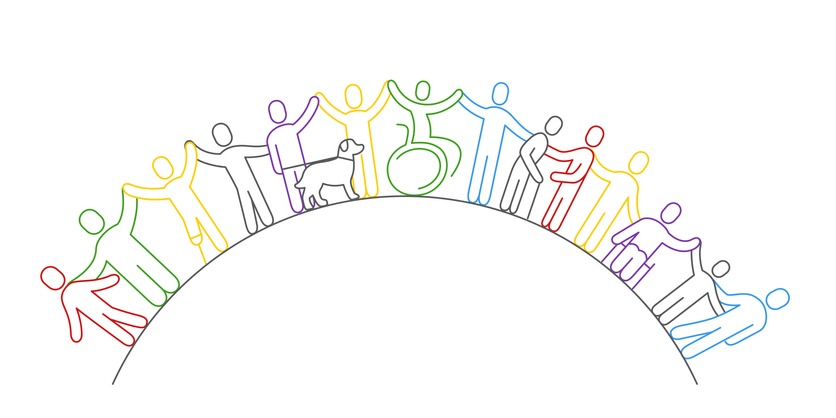
In a world of diversity, it’s time to celebrate disability pride and create a workplace where everyone can thrive.
CREDIT: This is an edited version of an article that originally appeared on Entrepreneur
In the modern world, people living with disabilities face a multitude of challenges when seeking employment and are often confronted with discrimination and exclusion simply because they have a disability. To create an institution that truly embraces inclusivity, it is essential that people with disabilities are represented at every level of the workplace. According to the World Health Report, a staggering 1.3 billion people, constituting 16% of the global population, grapple with significant disabilities. It is disheartening that people with disabilities frequently experience mistreatment and discrimination solely because of their disability.
Confronting ableism and sanism
Ableism, which involves discrimination against individuals with disabilities, and its counterpart, sanism, which targets those with mental health conditions, are two insidious forms of prejudice that often remain overshadowed in conversations about diversity, equity, inclusion, and accessibility (DEIA). Astonishingly, only about 4% of DEI programs incorporate disability, a statistic that leaves these communities vulnerable to discrimination. This disregard results in lower participation rates in the labour force, higher rates of unemployment, and wage disparities for people with disabilities.
Investing in accessibility
Merely proclaiming a commitment to hiring more individuals with disabilities is insufficient if the workplace itself remains inaccessible. Inaccessible practices create additional hurdles that people with disabilities must surmount, making it significantly more challenging for them to be recognised, employed, appreciated, and celebrated.
Every organisation must prioritise accessibility as a fundamental investment. Accessibility is not just about accommodating a minority; it is about making every aspect of your organisation accessible to everyone. It is about transforming information, content, and resources into something comprehensible, meaningful, and user-friendly. The key question is whether you are thoughtfully allocating resources to accessibility or treating it as an afterthought when an issue arises.
Accessibility should be approached proactively, rather than reactively when someone requests an accommodation. Consider allocating a substantial portion of your budget to establish a dedicated team or position focused on accessibility, such as a Chief Accessibility Officer. Additionally, seeking a third-party perspective through a consulting agency can provide valuable insights.
Disability pride: Embracing identity and celebrating diversity
According to the National Organisation on Disability (NOD), while there has been a recent increase in the number of people with disabilities entering the workforce over the past year, self-identification rates have actually decreased from 4.09 in 2020 to 3.68 in 2021. Therefore, the time has come to shift the focus from merely offering accommodations to genuinely celebrating disability pride.
Disability pride is the revolutionary notion that disability is not solely a medical condition but a social identity characterised by rich intersectionality, a vibrant community, and a unique culture. Disability pride affirms that individuals should not feel ashamed of their disabilities. While Disability Pride Month is celebrated in July and National Disability Employment Awareness Month in October, the movement to shift from shame to pride should not be confined to specific months; it should become an integral part of our year-round commitment to inclusion.
A year-round commitment to disability inclusion
It is paramount that the commitment to disability inclusion is not limited to specific months or observances but becomes a year-round endeavour. People with disabilities are an integral part of our communities and workplaces every day, throughout the entire year.
There is an array of approaches to incorporate individuals with disabilities in the workplace. Hosting workshops on disability inclusion, encouraging self-identification, providing information on legal resources, and fostering open discussions on disability pride and history are all significant steps. Establishing an Employee Resource Group (ERG) to unite individuals with disabilities, caregivers, and allies, and holding the organisation accountable, is a powerful way to cultivate a more positive culture.
Furthermore, collaborating with other networks to showcase the intersectionality of disability with various social identities, appointing board members with disabilities, and continuously monitoring the organisation’s operation are additional measures that demonstrate a concrete commitment to disability inclusion.
Embracing disability pride and fostering a culture of inclusivity are not optional initiatives but imperatives for the modern workplace. To dismantle barriers, confront ableism and sanism, invest in accessibility, and champion disability pride throughout the year, organisations must wholeheartedly commit to the cause of disability inclusion. It’s time to shift from mere accommodation to genuine celebration, ensuring that individuals with disabilities can thrive, contribute, and take pride in their valuable identities within the workplace.



Be the first to comment